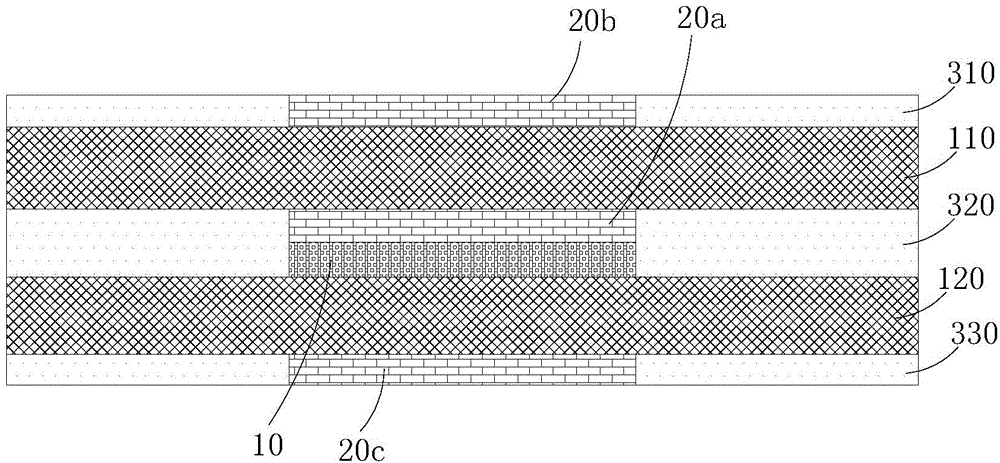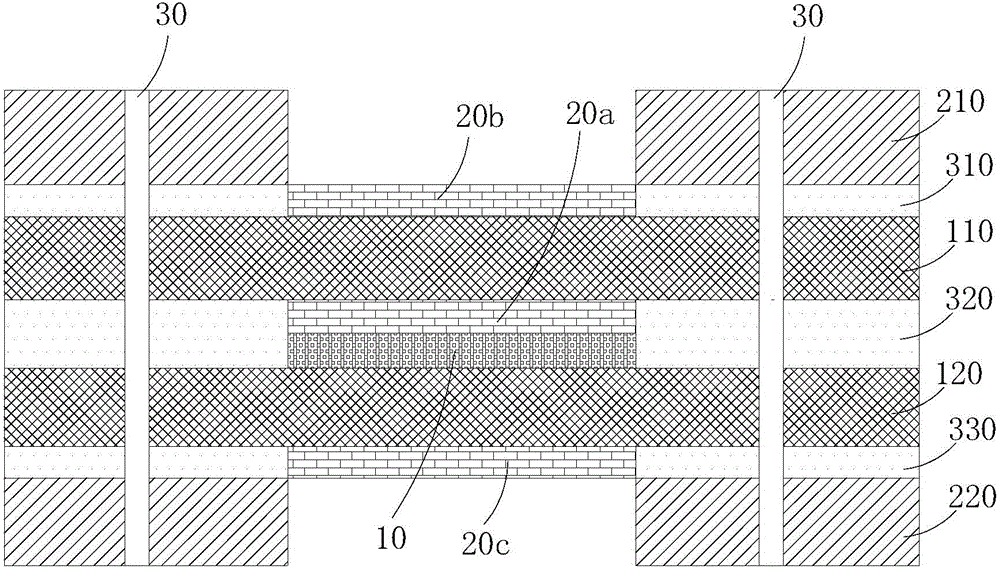Non-laminated rigid-flexible printed circuit board and manufacturing method thereof
A manufacturing method and rigid-flex board technology, applied in the field of circuit board manufacturing, can solve the problems of thermal expansion coefficient difference, hole copper cracking, rigid-flex board failure, etc., to avoid hole copper cracking, ensure impedance design requirements, and ensure heat resistance and reliability. Effects of Sexuality and Dimensional Stability
- Summary
- Abstract
- Description
- Claims
- Application Information
AI Technical Summary
Problems solved by technology
Method used
Image
Examples
Embodiment Construction
[0034] like figure 1 Shown, a kind of manufacturing method of non-layered rigid-flex board, comprises the following steps:
[0035] S100: Make at least two flexible core boards:
[0036] Making a circuit pattern on the surface of each flexible core board; preferably adopting the form of a book-type clamping film to convert the circuit pattern to the flexible core board;
[0037] According to the preset stacking sequence, on the two opposite surfaces of the adjacent flexible core boards, glue is pasted on the grooved area on one surface, and the covering film is pasted on the grooved area on the other surface. Paste the cover film on the grooved area on the surface adjacent to the core board and the rigid core board;
[0038] S200: making a plurality of prepregs: opening a through slot on the prepreg that matches the slotting area of the flexible core board;
[0039] S300: making at least two rigid core boards: opening a through slot on the rigid core board that matches th...
PUM
 Login to View More
Login to View More Abstract
Description
Claims
Application Information
 Login to View More
Login to View More - R&D
- Intellectual Property
- Life Sciences
- Materials
- Tech Scout
- Unparalleled Data Quality
- Higher Quality Content
- 60% Fewer Hallucinations
Browse by: Latest US Patents, China's latest patents, Technical Efficacy Thesaurus, Application Domain, Technology Topic, Popular Technical Reports.
© 2025 PatSnap. All rights reserved.Legal|Privacy policy|Modern Slavery Act Transparency Statement|Sitemap|About US| Contact US: help@patsnap.com



